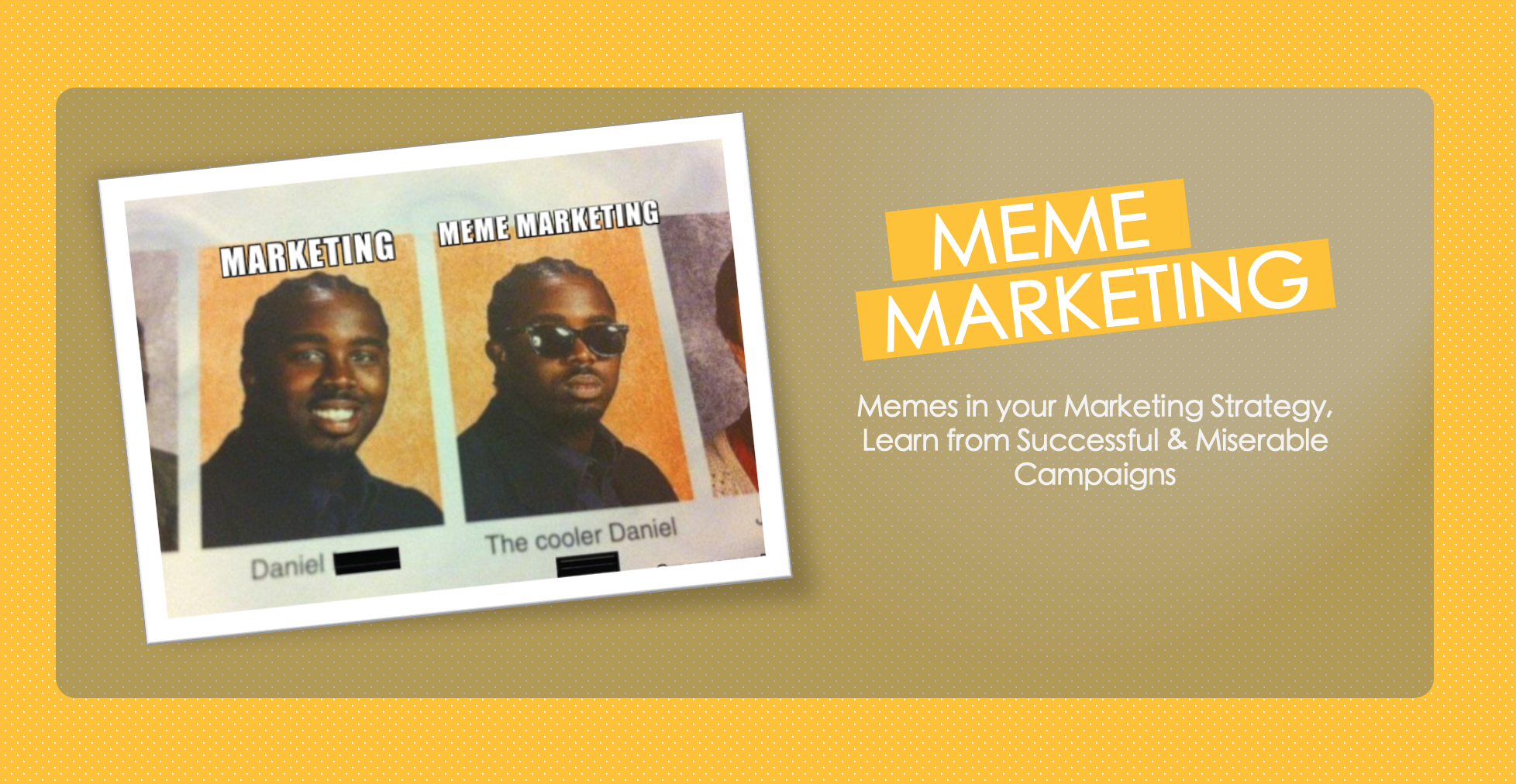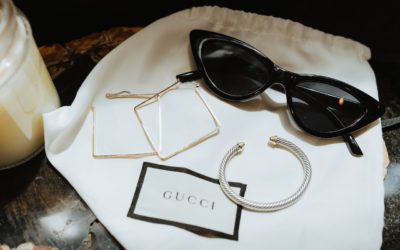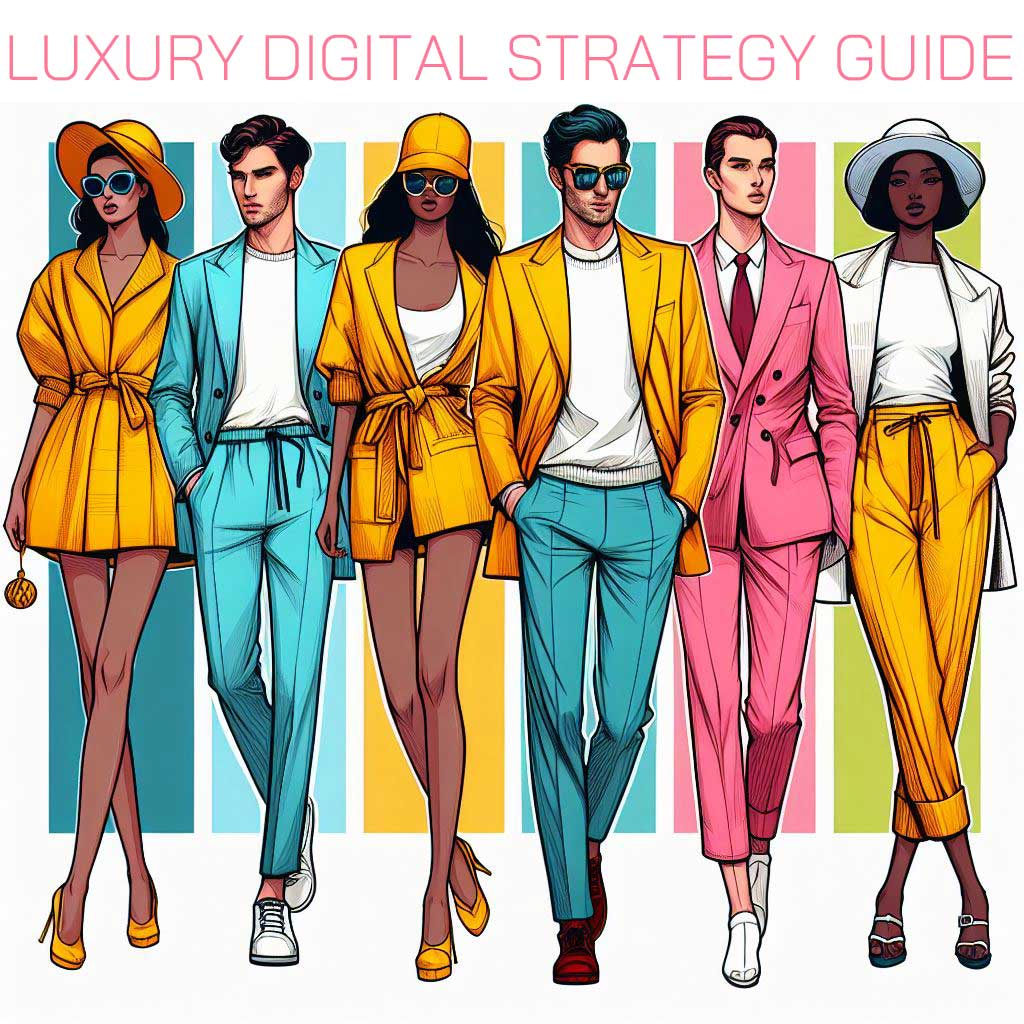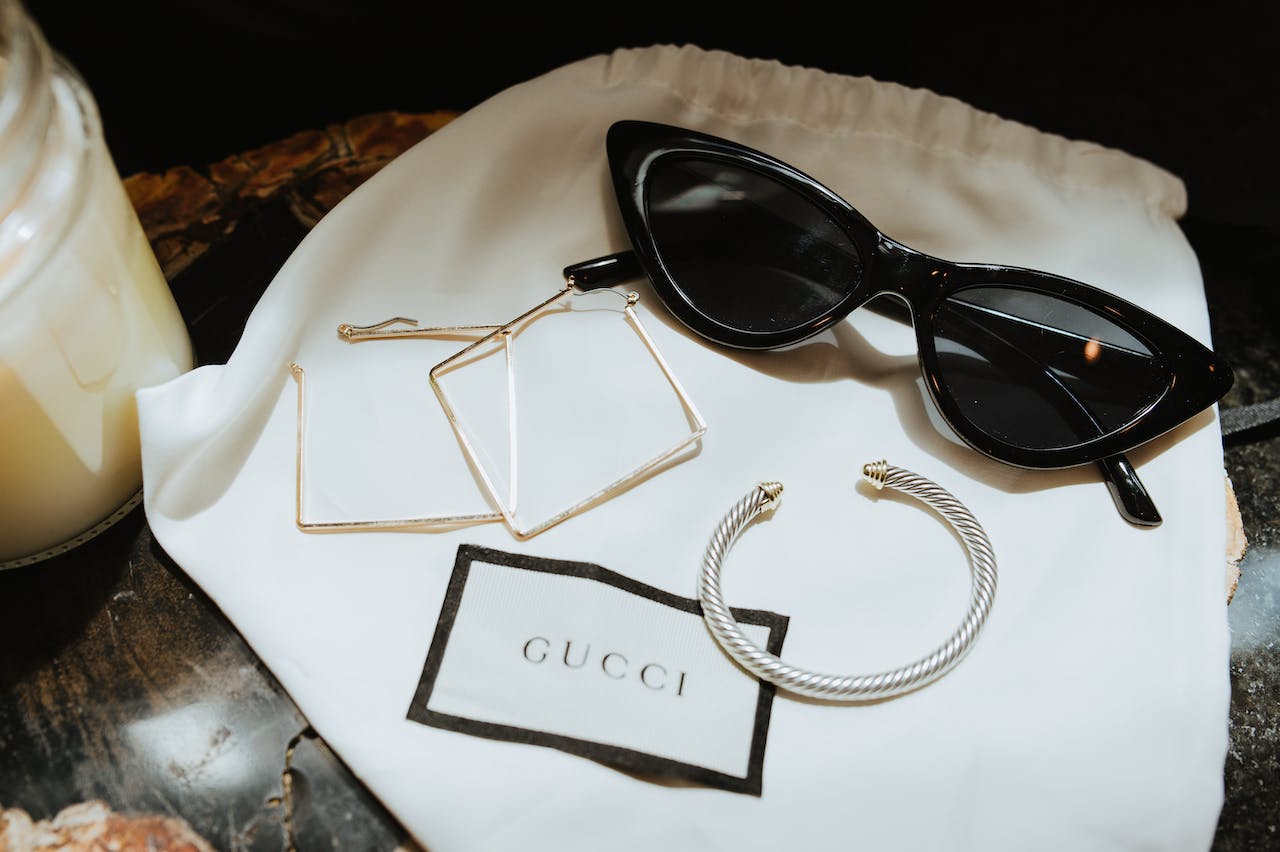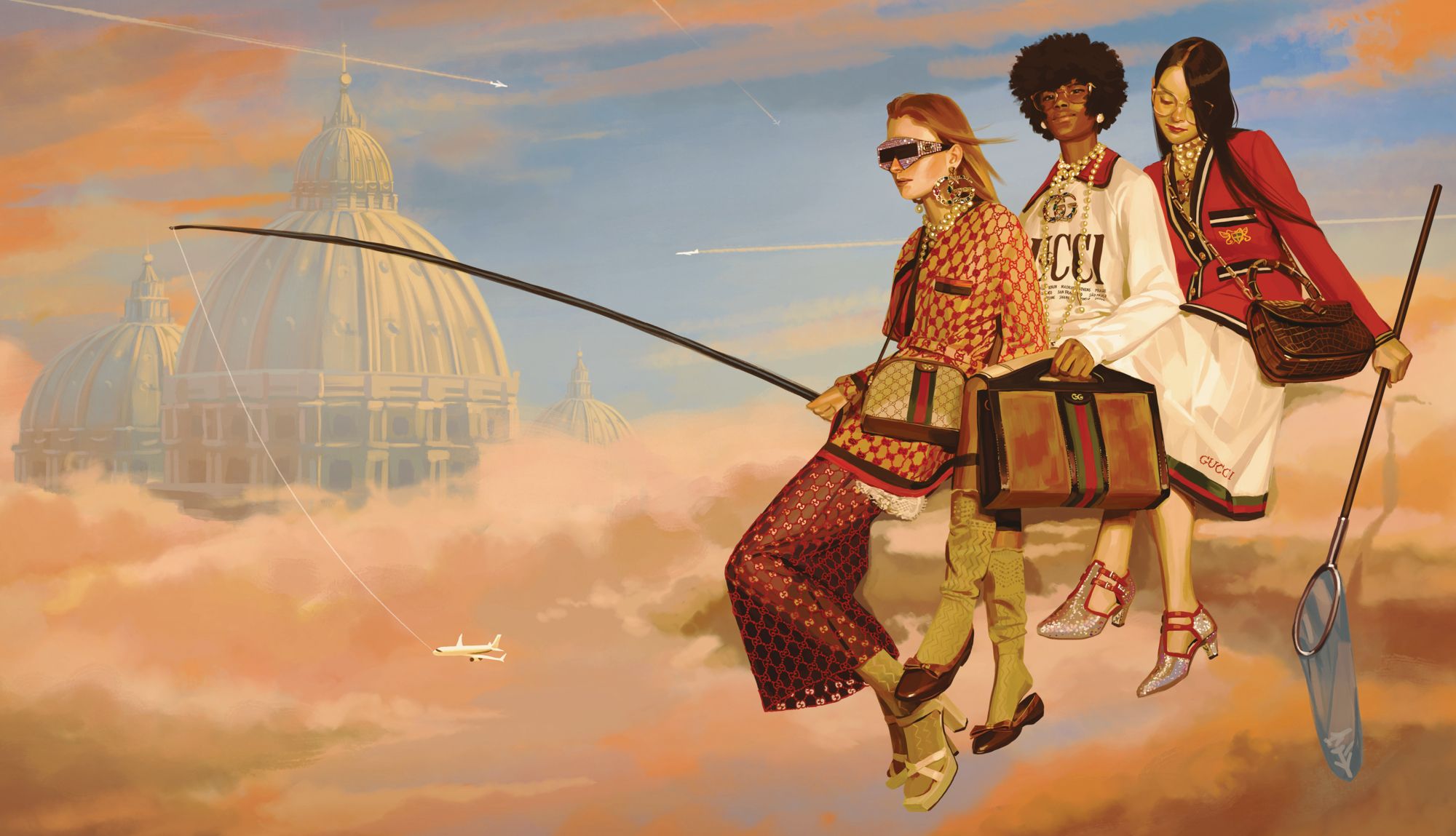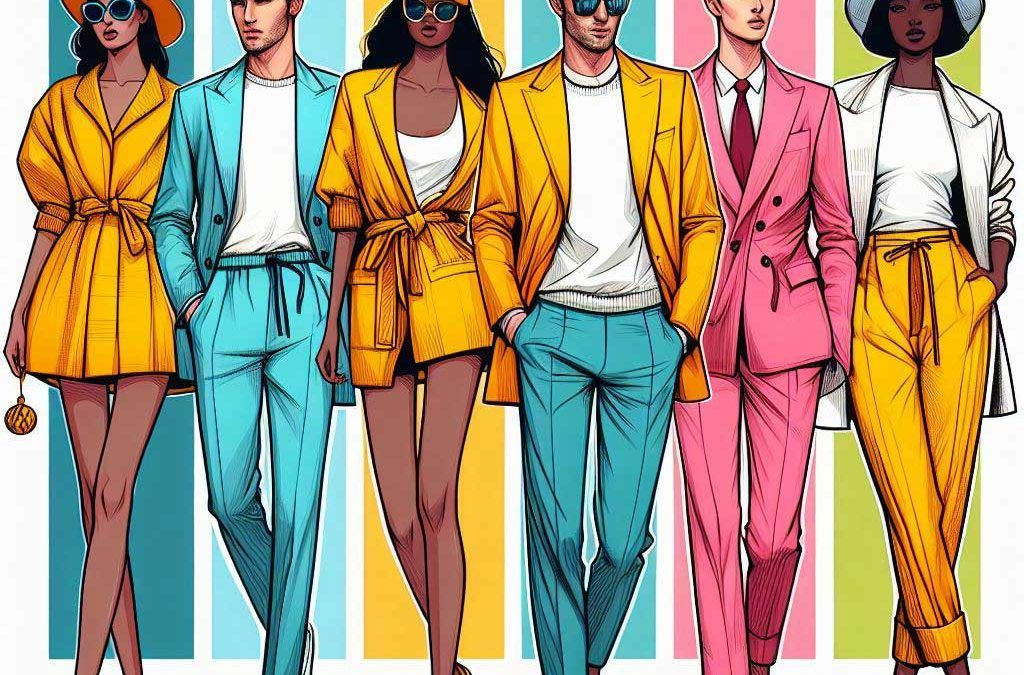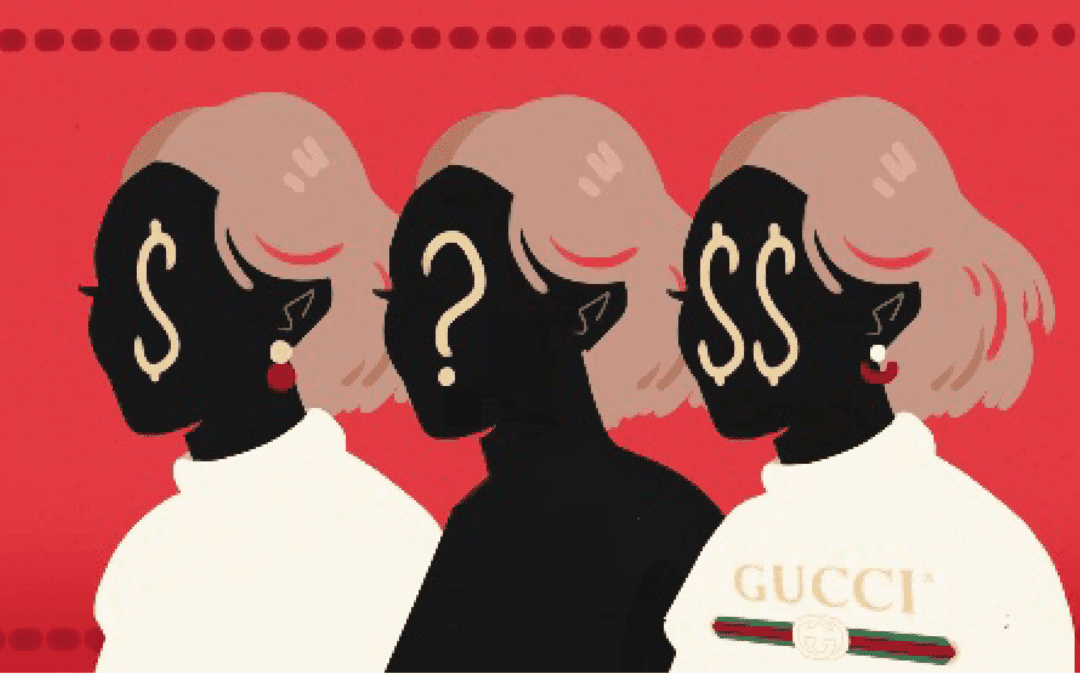Meme Marketing Strategy: How to Bend it to Your Will
What is inside this article 👇🏻
What's inside this article
- Memes, Brands, and the Battle for Attention
- Cracking the Meme Code: Understanding the Landscape
- Meme Marketing Hall of Fame: The Good, the Great, and the Legendary
- Meme Marketing Ugly Moments: When Brands Fail Miserably
- The Psychology of Meme Madness: Why We Can’t Resist
- Meme Marketing Dos and Don’ts: A Cheat Sheet for Brands
- The Future of Meme Marketing: Trends, Tricks, and Traps
- Embracing Cultural Relevance: The Key to Meme Marketing Mastery
But first…
What is a ‘Meme Marketing Strategy’?
Meme Marketing is the practice of creating and sharing humorous, viral internet memes to promote a brand, product or idea across social media platforms in a relatable, non-intrusive way. In plain words, it’s the savvy art of going viral by injecting brands into hilarious internet memes, inspiring user remixes that spread awareness exponentially.
94% of marketers have used memes in their campaigns, and 78% agree that memes improve social media engagement – HubSpot.
Memes, Brands, and the Battle for Attention
Meme marketing is the latest craze that’s got brands scrambling to get in on the action. Why, you ask? Well, it’s all about that sweet, sweet engagement and cultural relevance.
You see, these days, social media algorithms are like a never-ending meme machine, constantly churning out viral content that has the whole internet talking. And brands? They want a piece of that action. They’re trying to “trend-jack” and “meme hijack” their way into the hearts and minds of the meme-savvy consumer.
However, there’s a fine line between being a meme master and a meme disgrace. We’re talking cultural appropriation and consumer backlash if you don’t play your cards right. So, brace yourselves, we’ll include some funny and ugly examples.
Cracking the Meme Code: Understanding the Landscape
If you want to cut through the noise, and differentiate your brand and ensure your CFO’s pricing strategy, Memes are the way to go. These cultural artifacts have become the digital currency that everyone’s trading in. And let me tell you, they’re not just silly cat pictures anymore. Nope, these things can carry some serious symbolic meaning and social commentary.
If brands want to get in on the meme game, they need to understand the cultural significance and context behind the latest trends and formats. It’s all about tapping into that psychology of meme engagement.
What makes a meme go viral?
It’s a combination of timing, entertainment, relatability, and a sense of belonging. Brands that can stay on top of emerging social media trends are the ones that can truly authentically and relevantly insert themselves into the cultural conversation.
Recommended Action: “Meme Marketing” is all about riding the trend asap, so if your brand’s processes, authorizations and production are give the trend a subtle nod and add something relevant or meaningful can project a smart strategy… without risking to be ridiculed and look old.

Meme strategy does not have to be hard or forced, is fingering the pulse without feeling old.
Meme Marketing Hall of Fame: The Good, the Great, and the Legendary
When brands nail the meme game, the results can be downright legendary. Let’s take a look at some of the shining examples that have us all saying, “Yass, queen!”
Successful Meme Marketing Campaigns
Loewe using Meme or Trend Marketing?
The “I Told Ya” trend maybe should not be considered here but it has been gaining momentum, some calling it a “meme” and others a “trend”. Since the release of the film “Challengers” (directed by Luca Guadagnino and featuring Zendaya) the phrase has been generating significant media attention, with articles published by major outlets like The New York Times, and other lifestyle media.
Loewe’s creative director was the costume designer for the movie and he was inspired by John F. Kennedy Jr. 90s style and the exact same garment he wore… it was really well thought out since the T-shirt has significance in the movie’s plot. If you want to take a look at the numbers, you can start with the price of the shirt that is $330 of $690.
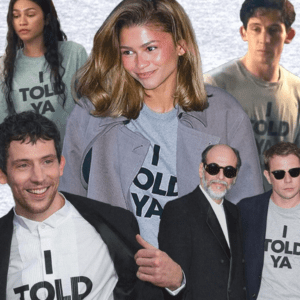
“I Told Ya” shirt was inspired by the nostalgia of JFK Jr. and the Costume Designer to have viral merch
Gucci’s Collab with North Face and Trainspotter Francis Bourgeois
Francis Bourgeois is a famous guy in Tiktok who jumped to fame posting trainspotting videos during the pandemic – with over 3.1 million followers. So, Gucci decided to team up with him to show the outdoor-inspired ready-to-wear collection inspired in the 80s and 90s nostalgia, but the twist is in getting awkward funny shots that could make pure meme magic... Gucci pulled it off during this serious time, embracing the unexpected in a relevant way to tap into the growing popularity of internet celebrity’s personality.

Zomato and Netflix: Masters of the Collab Meme Game
Indian food delivery app Zomato and Netflix successfully connected with their target audience, millennials and Gen Z, who are avid consumers of memes. Using a famous Bollywood dialogue that used wordplay led to increased engagement and social media sharing. They tapped into the zeitgeist, building a loyal following that strengthened the brand personality with food and movie nights. In fact, Zomato’s meme-fueled social media strategy has been credited with driving a 25% increase in customer engagement and shares over the entire year it ran.

It’s really funny knowing the context 😅 “Doodh mangoge, doodh denge” (Ask for milk, we’ll give you milk). Netflix then joined the campaign, with their billboard saying “Wednesday mangoge, Friday denge” (Ask for Wednesday, we’ll give you Friday).
Wendy’s Savage Twitter Presence
With its sassy, no-holds-barred Twitter presence, the fast-food chain has managed to capture the attention of the internet and become a cultural phenomenon. In fact, their savage clapbacks and witty comebacks have earned them over 3.4 million Twitter followers and generated over $30 million in earned media value.
These examples just show that successful meme marketing is all about understanding cultural trends, the platform and how to connect with the users there, plus taking creative risks.
Meme Marketing Ugly Moments: When Brands Fail Miserably
For every triumph, there are also some cringeworthy failures that make us want to hide under the nearest rock. Let’s take a look at a few cautionary tales:
Meme Marketing Campaigns Fails
DiGiorno’s Insensitive #WhyIStayed Tweet
When the #WhyIStayed hashtag emerged as a way for survivors of domestic abuse to share their stories, frozen pizza brand DiGiorno jumped in with a zero-researched and cringe-worthy tweet. Talk about missing the mark –this just goes to show that brands need to tread very carefully when entering sensitive cultural conversations.
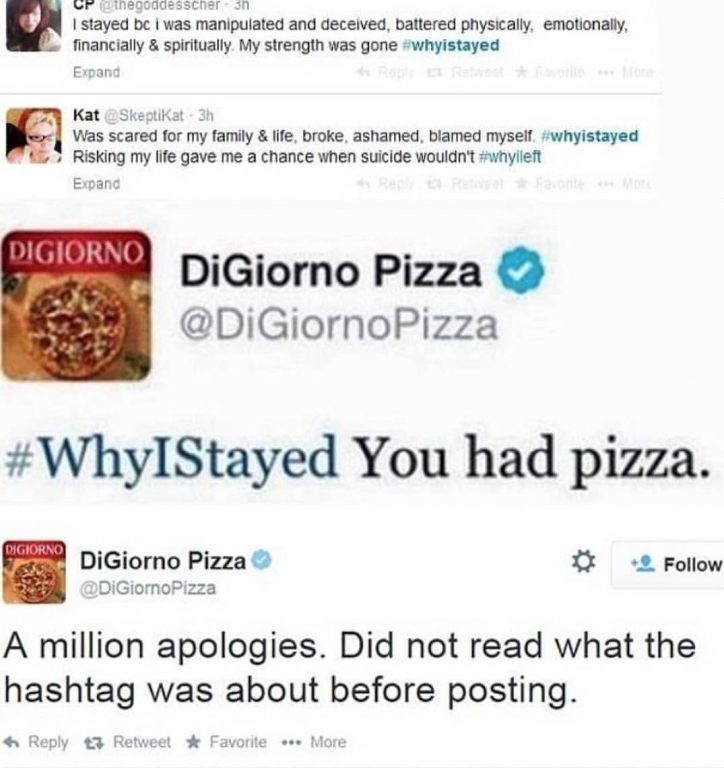
Di Giorno Pizza: Meme Marketing Utter Fail
Recommended Action: Understand the context, do trend research, be sensitive to the audience in every platform, and avoid coming across as opportunistic at all costs. Otherwise, you risk facing some major consumer backlash and damaging the brand reputation beyond repair.
Jimmy John’s Distracted Boyfriend Meme
When fast-food chain Jimmy John’s tried to jump on the “Distracted Boyfriend” meme, the result was about as exciting as a stale sandwich. The brand failed to understand the cultural context and ended up with a forgettable, overly promotional attempt that left us all wondering who was destroying the brand from the inside.
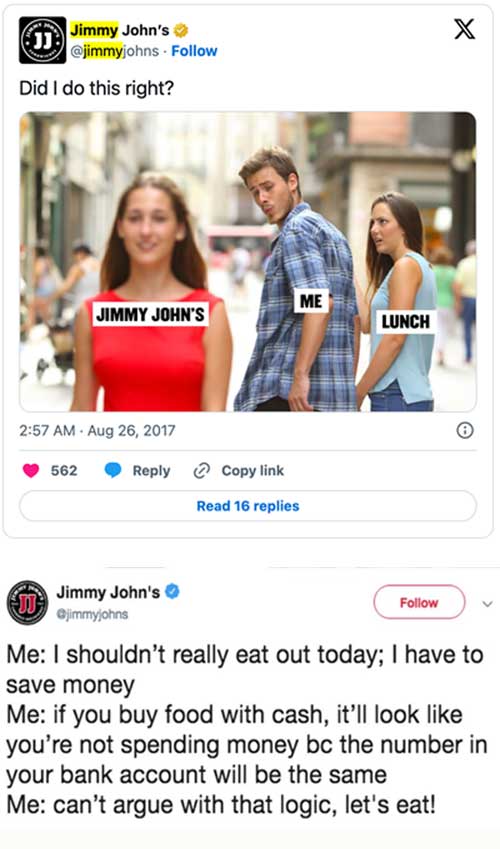
Jimmy John’s Autodestruction
The Psychology of Meme Engagement
What is the impact of memes on advertising?
Based on various research papers, Meme marketing or humour affect our psychology and have a direct and significant positive impact on consumer purchase intentions, consumer engagement, and above all, loyalty.
Why? Memes tap into our innate desire for entertainment, relatability, and a sense of belonging. They often reflect shared experiences and cultural references that make us feel like we are part of an exclusive club. And let’s not forget the role of social media algorithms in amplifying the reach and virality of these cultural phenomena.
Meme Marketing Dos and Don’ts: A Cheat Sheet for Brands
Navigating the world of meme marketing is like walking a tightrope – you’ve gotta be creative, culturally aware, and lightning-fast. Here’s a handy cheat sheet to help you avoid the pitfalls and become a meme marketing master while having fun along the way:
Dos:
- Do your research: Conduct thorough social listening and trend analysis to stay on top of the latest meme formats and cultural conversations.
- Be authentic and relevant to your brand: Ensure your meme content aligns with your brand’s identity, and products, and resonates with your target audience. Don’t just jump on any trend for the sake of it.
- Act fast and be ready to adapt: Meme-worthy moments are fleeting, so you’ve gotta be quick on your feet. But don’t be afraid to adapt and evolve your strategy as needed.
- Be creative: use creativity, humor and originality to add value to the conversation, rather than just copying what everyone else is doing.
- Accept the unavoidable: This is for larger brands that require a lot of time to respond due to authorizations or processes, and be disruptive in other ways with other media.
Don’ts:
- Avoid tone-deafness: Steer clear of inappropriate or insensitive attempts at trend-jacking that could result in major backlash.
- Don’t force it: If a meme or trend doesn’t authentically fit your brand, don’t force it. Consumers can smell inauthenticity a mile away.
- Don’t overdo it: Resist the urge to jump on every single meme or trend. Be selective and focus on the ones that truly resonate with your audience. Less is more.
- Don’t wait: Timeliness is the key –if you can’t be agile, focus on something else.
Related article: Solving 6 Common E-commerce Problems for Luxury Brands
The Future of Meme Marketing: Trends, Tricks, and Traps
As the digital landscape continues to evolve, the world of meme marketing is poised for some major changes. Here’s what you can expect:
- Going micro: The rise of niche internet personalities and micro-influencers as the new meme-makers and brand collaborators. Take advantage of their built-in audiences.
- Agility: The need for lightning-fast responsiveness to capitalize on those fleeting cultural moments.
- Balance: Between short-term meme-driven campaigns and long-term brand-building.
- Ethics: Ethical considerations around the appropriation of cultural trends and the potential for backlash.
- Integration: Utilizing emerging technologies, like AI and AR, to take meme-based content to the next level.
As the meme marketing landscape continues to evolve, the brands that stay ahead of the curve, embrace creativity, and prioritize authenticity will be the ones that truly rule the meme kingdom. So, get ready to level up!
Related Article: Top 10 Luxury Digital Trends for 2024 (Check what comes for AI & VR)
Embracing Cultural Relevance: The Key to Meme Marketing Strategy Mastery
In the fast-paced, attention-grabbing world of digital marketing, meme marketing has emerged as the ultimate weapon for brands looking to connect with their audiences on a deeper, more meaningful level.
By understanding the cultural significance of memes, tapping into consumer psychology, and navigating the dos and don’ts of this ever-changing landscape, brands can position themselves as the life of the party and cultivate lasting, authentic relationships with their consumers.
So, are you ready to take the next step? If you want to give this a whirl, but don’t don’t know where to start, be sure to contact us! We would be happy to discuss how can we help you ‘grab it by the meme’.

